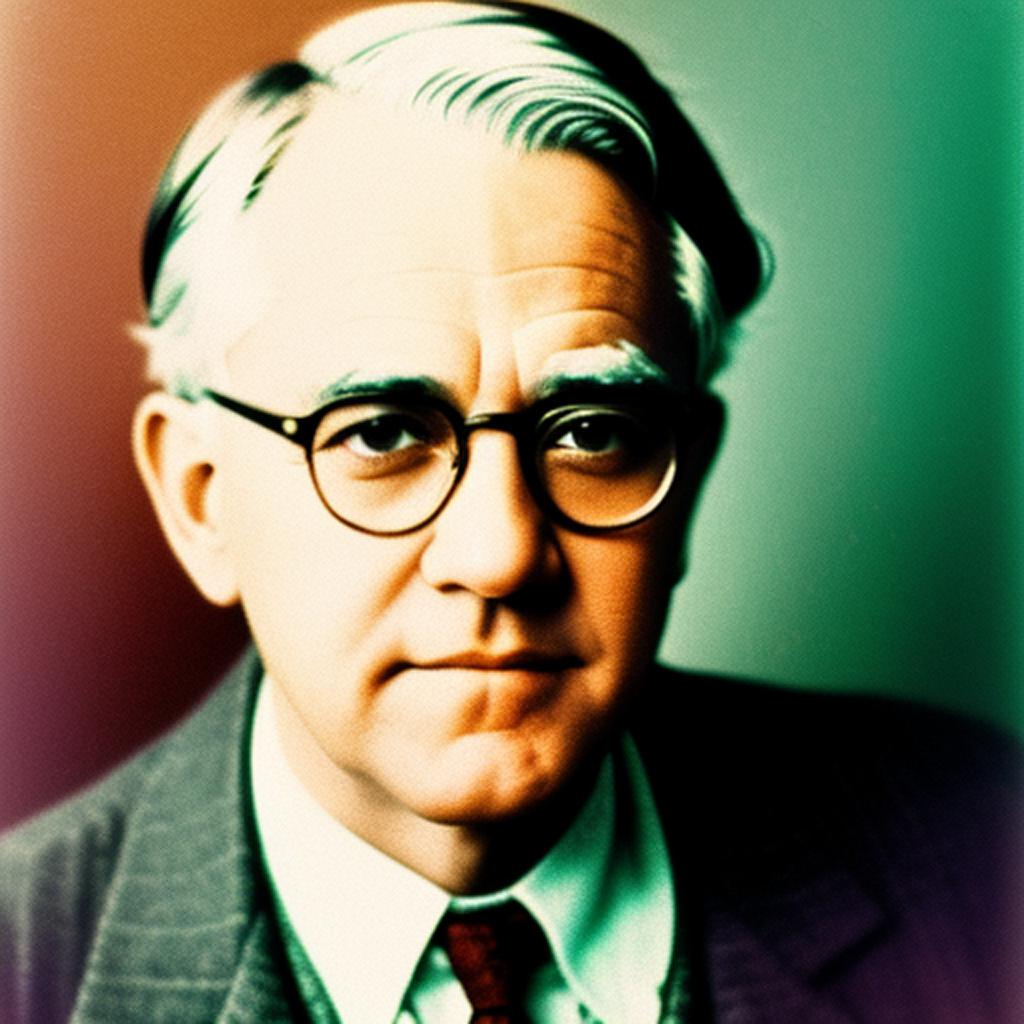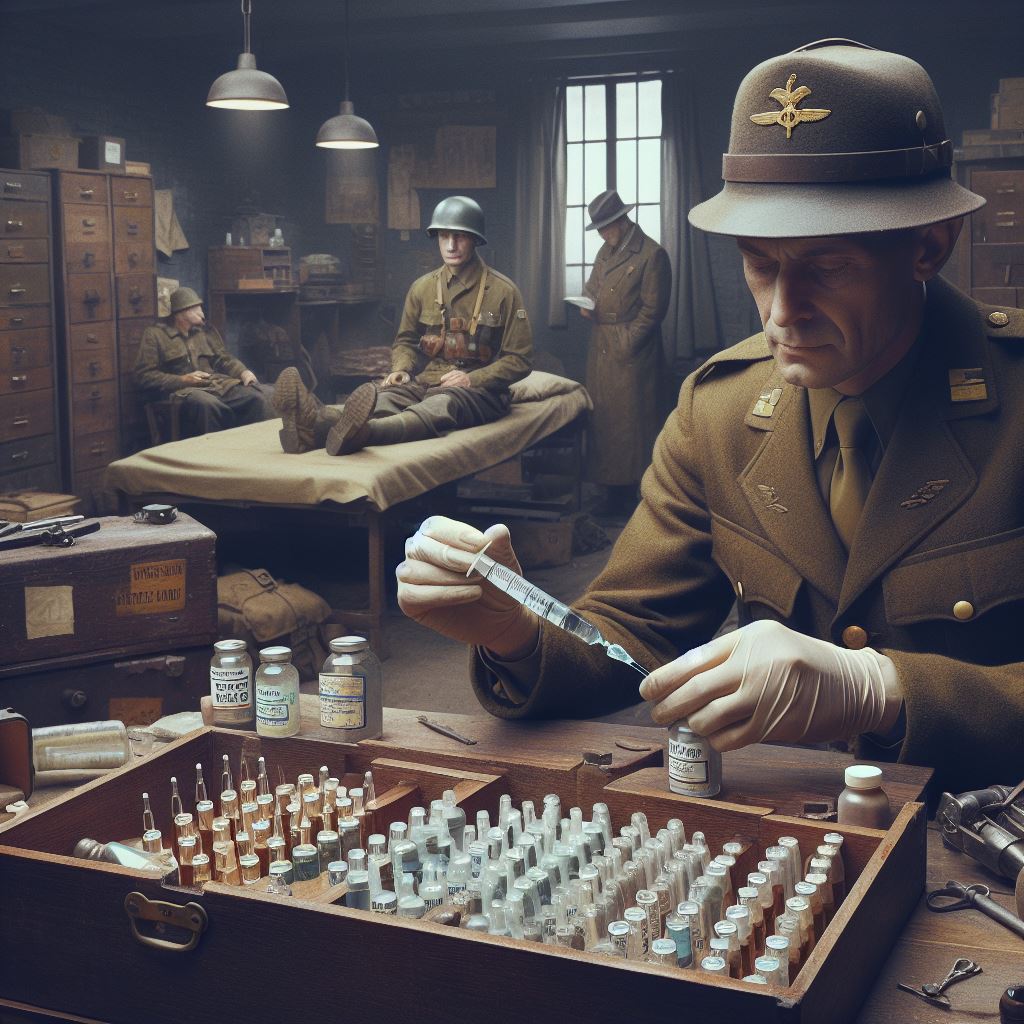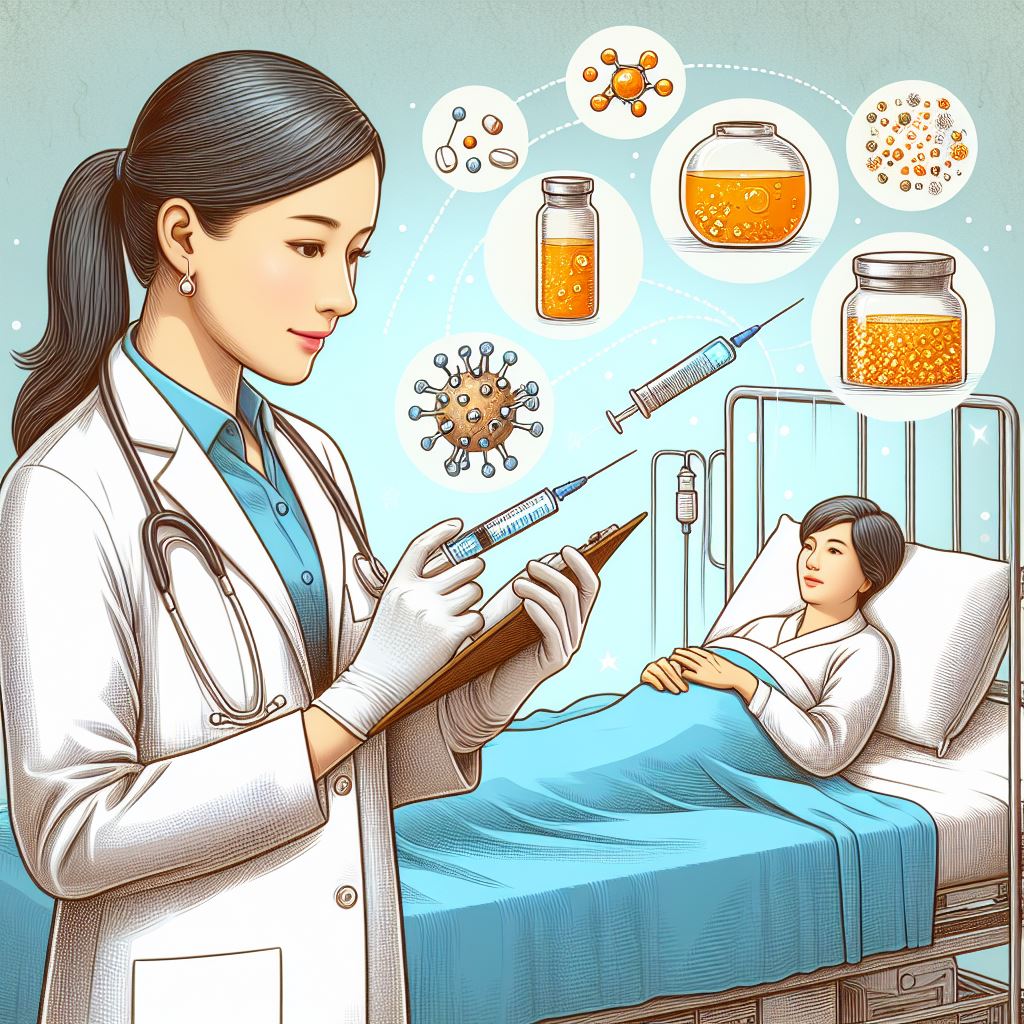The Invention of Penicillin Antibiotics:
Imagine a world where a scrape from a rusty nail could turn deadly, or a common cold could escalate into a life-threatening illness. Believe it or not, this was the reality for most of human history. Bacterial infections, today easily treated with antibiotics, were once leading causes of death. But a remarkable stroke of luck, a slice of mold, and the keen eye of a scientist changed everything.

This blog delves into the fascinating story of the invention of penicillin, the first antibiotic. We’ll explore the accidental discovery by Alexander Fleming and the journey to turn this moldy marvel into a life-saving medicine. This discovery ushered in a new era of modern medicine, forever transforming the fight against infectious diseases and saving countless lives.
When was penicillin invented?
Timeline of Penicillin antibiotics development
State of Medicine Before Penicillin
- Imagine a world where a simple cough could be a death knell. Before the dawn of antibiotics, infectious diseases reigned supreme, casting a long shadow over human existence. These microscopic enemies lurked everywhere, capable of transforming a minor wound, a child’s fever, or a woman’s childbirth into a life-threatening ordeal.
A Grim Reality: History paints a sobering picture. The 14th century witnessed the infamous bubonic plague, also known as the Black Death, which ravaged Europe for decades. This bacterial pandemic wiped out an estimated 30-50% of the European population. Even common infections like pneumonia and tuberculosis were leading causes of death in children and adults alike, with mortality rates reaching a staggering 30% or higher in the 19th century.
A Battlefield of Bacteria:
- Childbirth: The process of giving birth was particularly perilous. In the absence of antibiotics to combat postpartum infections, childbirth carried a high risk of death for both mother and child.
- Wounds & Injuries: A simple cut or scrape could become a gateway for deadly bacterial infections like gangrene or tetanus. Soldiers on battlefields faced a constant threat of infection from untreated wounds, significantly contributing to wartime casualties.
- Post-Surgical Complications: Even seemingly routine surgeries were fraught with danger. The risk of post-operative infections often outweighed the potential benefits of surgery.
Limited Options, Desperate Measures:
Imagine a world where a scrape from a rusty nail could lead to a gruesome and agonizing death. This wasn’t a dystopian novel; it was the stark reality for most of human history. Bacteria, these microscopic enemies, lurked everywhere, capable of transforming even the most minor injury or illness into a life-threatening ordeal.
A Battlefield of Bacteria: Bacterial infections like pneumonia, tuberculosis, and sepsis reigned supreme. Mortality rates were staggeringly high, with some infections claiming over 30% of lives. Every cough, every cut, was a potential gateway for these invisible invaders.
Pre-Antibiotic Medicine:
The tools of pre-antibiotic medicine offered little more than a desperate gamble against this relentless foe. Treatments were often based on ancient beliefs and superstition, doing little to combat the underlying bacterial cause. Here’s a glimpse into these ineffective practices:
- Bloodletting: This gruesome practice, rooted in the faulty belief of an imbalance of bodily fluids, involved draining blood from the patient. This not only weakened the already compromised immune system but also offered no defense against bacteria.
- Leeches: These blood-sucking worms were believed to draw out “bad humors” thought to contribute to disease. While they did remove some blood, they offered no therapeutic benefit and could introduce new infections through their bites.
- Harsh Purgatives: These concoctions induced forceful vomiting and diarrhea, further dehydrating and weakening patients. This approach not only worsened their condition but also provided no benefit in fighting bacterial infections.
These practices were not only ineffective against bacterial infections but often worsened patient outcomes.
Further Exploration-
- The Centers for Disease Control and Prevention (CDC) offers a detailed historical account
- The National Institutes of Health (NIH) provides historical statistics on infectious diseases
The Pioneering Scientist: Sir Alexander Fleming(1928)
Enter Dr. Alexander Fleming, a Scottish bacteriologist with a keen eye for detail and a passion for understanding the body’s fight against infection. Born in 1881, Fleming developed a keen interest in medicine early on. He served as a surgeon in World War I, witnessing firsthand the devastating impact of infections on wounded soldiers. This experience fueled his passion to find better ways to combat these invisible enemies.
After the war, Fleming returned to his research, focusing on bacteriology, the study of bacteria. He was particularly interested in developing methods to disinfect wounds and prevent infections. Fleming spent years researching bacteria and their behavior, searching for ways to combat their relentless attacks. In 1928, while working at St. Mary’s Hospital in London, Fleming made a discovery that would forever change the course of medicine.

A Moldy Surprise: Fleming was known for his meticulous lab practices, but sometimes, even the best-laid plans can be upended by a stroke of luck. Returning from vacation, Fleming noticed something unexpected in one of his culture plates containing Staphylococcus bacteria – a mold had grown! Most scientists would have discarded the contaminated plate, but Fleming, ever the curious observer, decided to take a closer look.
A Zone of Inhibition: To his astonishment, Fleming observed a clear zone around the mold colony where the Staphylococcus bacteria had stopped growing. This “inhibition zone” hinted at the possibility that the mold was producing a substance that somehow suppressed bacterial growth. Fleming named this mold Penicillium notatum and began to investigate its properties further.
Challenges of a Sticky Situation: However, isolating and purifying the active ingredient from the mold proved to be a significant challenge. Early attempts yielded a crude, unstable extract with limited effectiveness. Despite these initial hurdles, Fleming’s serendipitous discovery had ignited a spark. The potential of penicillin, the substance produced by the mold, to combat bacterial infections was evident, paving the way for further research and development.
Historical References:
- Fleming’s Nobel Prize Biography: This website from the Nobel Prize organization provides a detailed biography of Alexander Fleming, including his early life, education, research focus, and the discovery of penicillin.
- Science History Institute Biography: The Science History Institute offers a concise biography of Fleming, highlighting his contributions to bacteriology and the discovery of penicillin.
Websites:
- National Library of Medicine: The National Library of Medicine provides a historical perspective on Alexander Fleming and the discovery of penicillin.
- Britannica Biography: The Britannica online encyclopedia offers a comprehensive biography of Alexander Fleming, detailing his accomplishments and contributions to medicine.
From Lab to Life: (The Work of Howard Florey and Ernst Chain):
While Fleming’s accidental discovery laid the groundwork, the true power of penicillin wouldn’t be realized without the dedicated efforts of Howard Florey and Ernst Chain.
Building on Fleming’s Legacy: Howard Florey, an Australian pathologist working at Oxford University, recognized the immense potential of penicillin after reading Fleming’s paper in 1929. He teamed up with Ernst Chain, a German biochemist, to further investigate and develop penicillin as a therapeutic agent.

Overcoming Hurdles: Fleming’s initial methods yielded only tiny amounts of penicillin, making it impractical for widespread use. Florey and Chain embarked on a relentless pursuit, tackling the challenges of large-scale penicillin production. They devised new methods for culturing the mold and extracting penicillin, significantly increasing yields.
Why was the invention of penicillin so important in the context of World War II?
A Race Against Time: Their research gained further urgency during World War II. Soldiers on battlefields were highly susceptible to infections, and existing treatments were largely ineffective. Florey and Chain, aware of the potential to save countless lives, desperately sought ways to mass-produce penicillin.

A Turning Point: A critical breakthrough came in 1940 when a team at the University of Illinois, led by Dr. Dorothy Hodgkin (Nobel Laureate, 1964), used X-ray crystallography to partially determine the structure of penicillin. This newfound knowledge aided in the development of more efficient production methods. Additionally, a chance encounter with a mold expert, Norman Heatley, at Oxford, proved invaluable. Heatley’s expertise in mold cultivation significantly improved penicillin production techniques.
A Global Effort: The race to develop penicillin was a collaborative one. With the war intensifying, the British and American governments joined forces, funding research and large-scale production facilities. By 1943, the first patients were successfully treated with penicillin, marking a turning point in the fight against bacterial infections.
A Legacy of Healing: The development of penicillin marked the dawn of the antibiotic era. It revolutionized medicine, drastically reducing mortality rates from previously deadly infections like pneumonia, meningitis, and septicemia.
Further Exploration:
- For a detailed account of Florey and Chain’s work, you can refer to their Nobel Prize lecture
- To learn more about the role of Dr. Dorothy Hodgkin, visit the Nobel Prize website
- The National Institutes of Health (NIH) provides a wealth of information on antibiotics and their history
The Penicillin Miracle (Impact and Legacy):
The discovery and development of penicillin ushered in a medical revolution, forever changing the fight against infectious diseases. This “moldy marvel” proved remarkably effective against a wide range of bacterial infections, previously considered untreatable and often fatal.
A Dramatic Decline in Mortality Rates: Prior to penicillin, infections like pneumonia, meningitis, and septicemia were the leading causes of death. Statistics paint a grim picture. In the early 1900s, pneumonia alone claimed the lives of millions, with mortality rates exceeding 30%. However, with the introduction of penicillin, these numbers began a dramatic decline. Studies published in the Journal of the American Medical Association (JAMA) in 1945 documented a staggering 80% reduction in mortality rates for bacterial pneumonia following penicillin treatment. Similar trends were observed for other previously deadly infections.

A New Era of Hope: The impact of penicillin extended beyond mere statistics. It offered a newfound hope to countless patients facing life-threatening infections. Surgical procedures, once fraught with the risk of post-operative infections, became safer. Bacterial diseases like syphilis, previously considered incurable, were brought under control.
A Shadow on the Horizon: However, the story of penicillin is not without its challenges. With widespread use came the rise of antibiotic-resistant bacteria. Bacteria, constantly evolving, can develop mechanisms to resist the effects of antibiotics. Overuse and misuse of antibiotics have fueled this phenomenon, making some previously treatable infections difficult to combat.
The Ongoing Search: The discovery of penicillin ignited a race for new antibiotics. However, the pace of discovery has slowed in recent years, while the threat of antibiotic resistance continues to grow. Researchers around the world are working diligently to develop new and effective antibiotics. We must also practice responsible antibiotic use, ensuring these lifesaving drugs remain effective for generations to come.
Further Exploration:
- For the JAMA study on penicillin’s impact on pneumonia mortality rates.
- The Centers for Disease Control and Prevention (CDC) provides valuable information on antibiotic resistance
- The World Health Organization (WHO) offers resources on the global threat of antibiotic resistance
Challenges and Advances in Antibiotic Development
The story of penicillin is one of triumph, but it also serves as a stark reminder of the ongoing battle against infectious diseases. While penicillin revolutionized medicine, a new challenge emerged – the rise of antibiotic-resistant bacteria.
The Antibiotic Resistance:
Bacteria are remarkably adaptable organisms. With widespread antibiotic use, some bacteria develop mechanisms to resist the drugs designed to kill them. This creates antibiotic-resistant bacteria, often referred to as “superbugs.” These resistant strains pose a significant threat, making previously treatable infections difficult or impossible to cure.
Historical Reference:
The threat of antibiotic resistance was recognized early on. Alexander Fleming, himself, warned about the potential for overuse in his Nobel Prize acceptance speech in 1945: “[T]here is the danger that the ignorant man may easily underdose himself and by exposing his microbes to non-lethal quantities of the drug make them resistant.
The Search for New Weapons:
Despite the challenges, the fight against antibiotic resistance continues. Researchers around the world are actively engaged in ongoing research to develop new and effective antibiotics. These efforts include:
- Exploring new sources: Scientists are looking for novel antibiotics in unexpected places, such as soil samples from extreme environments or the microbial communities living in insects and animals.
- Targeting different mechanisms: New antibiotics are being designed to target different bacterial processes, making it more difficult for bacteria to develop resistance.
- Combination therapies: Researchers are exploring the use of combination therapies, utilizing multiple antibiotics simultaneously to reduce the chances of resistance developing.
For up-to-date information on antibiotic resistance research, you can refer to the following resources:
A Shared Responsibility: The Future of Antibiotics
The future effectiveness of antibiotics hinges on a shared responsibility. Here’s how we can contribute:
- Responsible use in medicine: Antibiotics should only be prescribed when truly necessary, and patients should complete the entire course of medication as directed by their doctor.
- Responsible use in agriculture: The routine use of antibiotics in healthy animals should be discouraged to prevent the development of resistant bacteria in the food chain.
- Public awareness: Educating the public about the dangers of antibiotic resistance and the importance of responsible use is crucial.
Conclusion: A Legacy of Healing (Looking Forward):
The invention of penicillin stands as a monumental achievement in the history of medicine. This “moldy marvel” revolutionized our fight against infectious diseases, transforming a world where simple infections could be deadly into one where countless lives are saved every year. Penicillin ushered in the antibiotic era, dramatically reducing mortality rates and paving the way for advancements in surgery, childbirth, and other medical procedures.
However, the story of penicillin also serves as a reminder of the constant battle against infectious diseases. The specter of antibiotic resistance looms large, highlighting the need for responsible antibiotic use by both medical professionals and the public.
The future of medicine hinges on continued research and development of new antibiotics. Scientists around the world are actively exploring novel approaches to combat resistant bacteria. At the same time, we must all play a role in preserving the effectiveness of existing antibiotics by using them judiciously and only when truly necessary.
This blog has merely scratched the surface of the fascinating story of penicillin and antibiotics. For further exploration, consider reading about:
- The discovery of other major antibiotics like streptomycin and cephalosporins.
- The current state of antibiotic resistance research and ongoing efforts to develop new drugs.
- The importance of public health initiatives aimed at promoting responsible antibiotic use.
By understanding the past, present, and future of antibiotics, we can ensure that these life-saving medicines continue to be a powerful weapon in our fight against infectious diseases for generations to come.
Explore Related Articles
We hope you found this article insightful and valuable. If you’re hungry for more knowledge, consider checking out these related posts:






